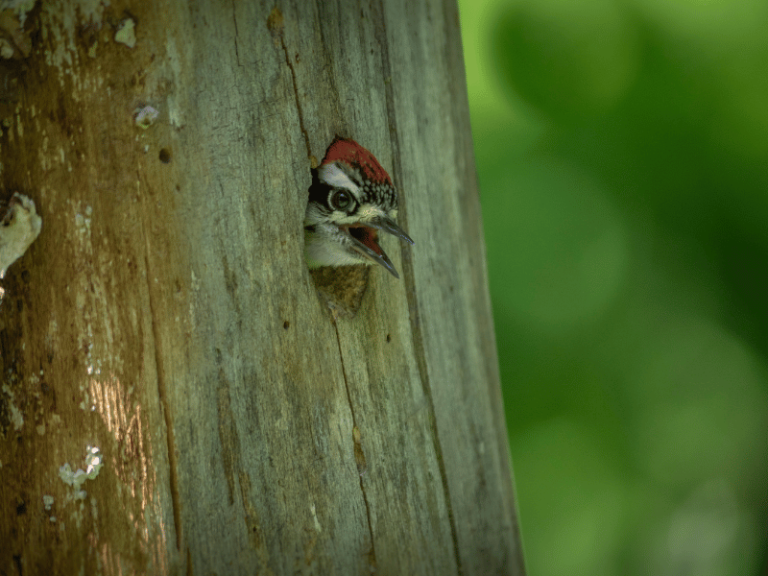When we take a walk in the park or rest in the woods, we often hear the distant “tapping” sound of woodpeckers at work.
Woodpeckers are birds adept at pecking into wood. Not only can they easily pierce through ordinary bark, but even tough wood can quickly be drilled into by them. Therefore, during their annual breeding season, a pair of male and female woodpeckers can create a nest hole in just a few days, typically around 7-10 centimeters in diameter and about 10 centimeters deep, for laying eggs and raising their chicks.
Woodpeckers have a peculiar habit of being fickle about their nests. They always prefer something new over the old. A nest they dug out this year will not be used the next year; they must carve out a new one. After they pair up, the male and female woodpeckers cooperate to begin nest-building. Often, after finishing one hole, if they are not satisfied, they will redo the entire hole or sometimes drill several new holes. In the end, they may choose only one satisfactory hole for egg-laying and chick-raising, abandoning the rest of the holes without concern for other birds or animals that may occupy them. As a result, many birds that love living in tree holes but cannot create their own, such as starlings, pied flycatchers, woodcocks, and some animals like squirrels, dormice, and bats, always search for abandoned woodpecker holes every year to settle down. Since woodpeckers specialize in drilling holes in trees, people refer to them as the “carpenters of the forest.”

